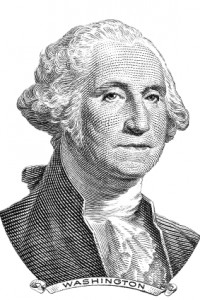 If you’re drafting a set of bylaws for the first time, don’t worry. Anyone who’s taken a high school civics class or worked for an institution intuitively understands bylaws. Like the U.S. constitution or an employee handbook, bylaws enumerate rights and responsibilities. The process of writing bylaws is like a structured conversation about what those responsibilities should be and how the club should conduct business. How to structure bylaws and what to include will vary depending on the club. This article is a primer on the possibilities. It’s best to read it along with How To start a Booster Club, which gives more details about mission statements and financial considerations.
If you’re drafting a set of bylaws for the first time, don’t worry. Anyone who’s taken a high school civics class or worked for an institution intuitively understands bylaws. Like the U.S. constitution or an employee handbook, bylaws enumerate rights and responsibilities. The process of writing bylaws is like a structured conversation about what those responsibilities should be and how the club should conduct business. How to structure bylaws and what to include will vary depending on the club. This article is a primer on the possibilities. It’s best to read it along with How To start a Booster Club, which gives more details about mission statements and financial considerations.
-
Charter members: you need a group to write the bylaws together. If you’re starting a club, these are your first volunteers.
-
Consensus: While founding members might write simple majority rules into the bylaws, it’s best to approve the first draft of bylaws based on a consensus. Remember, consensus doesn’t mean that everyone agrees, it means that no one disagrees; that something is acceptable, even if it’s not ideal. As Benjamin Franklin said at 1787 constitutional convention “I confess that there are several parts of this constitution which I do not at present approve, but I am not sure I shall never approve them.”
-
Legal basics: external demands of federal and local government, school boards, and other bodies will guide the requirements of your club. The IRS, for example, wants certain outcomes from organizations requesting nonprofit status. Usually, they relate to bylaws.
-
A mission statement: this is a concise summary, comprised of one or a few sentences, concerning the ultimate goals of your club. (To cover your bases, you can include IRS policies in your mission statement. See sample #1, Article III, Section 2 for an example of how to do this.)
-
Organizing documents: if your bylaws are more general, you might want to adopt “policies,” “protocols,” or “standard operating procedures;” documents that detail how things are supposed to be done in the club (more on this at the end of the post).
-
Recordkeeping: for taxes and nonprofit status, all clubs need to keep records. You might as well establish a system for this in the bylaws. (For more on recordkeeping, see Momento Post).
-
Miscellaneous: school districts often have rules about how booster clubs can be structured. Even if the booster club is not formally affiliated with the school board, you should check with your district’s administration before you finalize your bylaws.
[yks-mailchimp-list id=”844180b8f4″]
-
-
 Voting & Membership Basics: what I’m recommending here is not innovative. If your club wants to try novel forms of governance like consensus on every issue, gender-balanced board, or voting by student participants, you should feel free to experiment. However, for those who just want to get the job done, here are the essentials to making an organization run.
Voting & Membership Basics: what I’m recommending here is not innovative. If your club wants to try novel forms of governance like consensus on every issue, gender-balanced board, or voting by student participants, you should feel free to experiment. However, for those who just want to get the job done, here are the essentials to making an organization run.-
Who can be a member of the club? Club membership might include all parents, relatives or even friends of students. But should all of these people be members? Many clubs limit their membership to adults that are over 21, supporters who pay dues, those who volunteer, or other criteria.
-
Who can vote? Many clubs follow a representative model, in which members elect board members, who become the sole voters on a day-to-day business. However, some clubs specify that major changes require a vote by a quorum of all members, not just board members. Common examples are amendments to the bylaws or increases in membership dues.
-
How can voters vote? Robert’s Rules of Order are the time-honored standard of proposing and passing business in any organization. Most booster clubs rely on its rules, no matter whom the voting body is composed of.
-
When should votes happen? Many clubs lay down election and voting information in their bylaws. Often, board members meet once a week or once per month. Board members generally run (often unopposed) in the last meeting of spring. Bylaws should also state the requirements for quorum; the number of members or board members needed to bring business to a vote.
[yks-mailchimp-list id=”844180b8f4″]
-
-
Financial Basics
-
When is the fiscal year? Aside from voting issues, it’s also important to define the fiscal year in your bylaws. Many clubs use the school year or traditional business quarters for their financial reports and goal-setting. However, there’s something to be said for using the calendar year: starting the year in January offers a natural transition time, integrates freshman parents, and kickstarts a new round of fundraising mid-year. (Usually, clubs start to lose steam around Christmas break).
-
A system for financial accountability: as I mentioned in the How To Start A Booster Club post, there are many tools for financial accountability. Examples include multiple signers for checks, third party audits, and bonding key board positions. Whatever your system, it should be included in your bylaws.
-
 More on “policies,” “protocols,” or “standard operating procedures”
More on “policies,” “protocols,” or “standard operating procedures”
It’s not essential to include day-to-day functions in your bylaws. Executing meetings, officer duties, and volunteer work can fit into the executive duties of the president and the board. However, many clubs have found it important to define the following in detail:
-
Agendas: bylaws can outline a specific agenda, usually an abridged version of agenda in Robert’s Rules of Order. Most commonly this includes the setting of the agenda, reading and approval of minutes, treasurer’s report, committee chair report, and a President’s report.
-
Officers: job descriptions can be set out in detail. Including positions makes it very clear what job roles are. That clarity can be tedious, however, as board votes would be required to change the job descriptions. Committees: many bylaws set out the definitions and responsibilities of committees. Sample #2 at the end of the post has a great example of this (see Article IX–Committees).
-
Volunteer guides: while you could document volunteer responsibilities in the bylaws, they might fit better into a supporting document. Volunteers will appreciate step-by-step instructions for tasks such as submitting receipts.
We hope that gives you an idea of what’s expected in a set of booster club bylaws. If you’re feeling overwhelmed by information, remember that there are many right ways to write bylaws. Most bylaws undergo changes yearly, and experience will allow your board to amend the founding document. The U.S. constitution has been changed 17 times, with thousands of proposals never passed. Your bylaws should have a solid framework that’s appropriate to your club’s context. But it will be a work-in-progress forever. If you’re ready for more information on bylaws, take a look at these samples, below. They represent booster clubs from different states serving different activities. Lastly, I’m very interested in hearing stories about booster clubs writing their by laws. Send your stories to us here.
Sample Bylaws from Real Booster Clubs
#1 Alameda High School Athletic Supporters / Athletic / West (Word Doc. Download)
#2 Taylor PlayMakers Booster Club / Theater / Northeast
#3 Ann Arbor Huron High School / Athletic / Midwest



